English Oak Tree
- September 28, 2023
- 0 comment
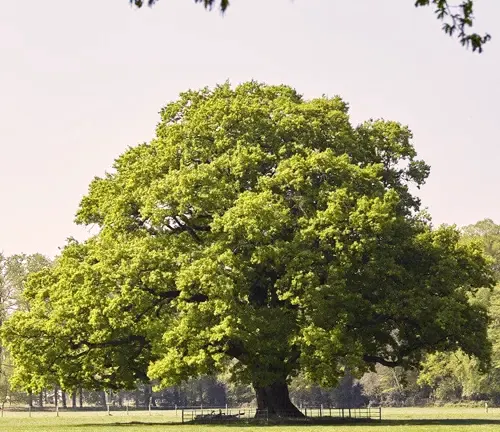
The English Oak, scientifically known as Quercus robur, is a magnificent deciduous tree that holds a special place in the hearts of many in the British Isles. Its towering stature, often reaching heights of up to 100 feet, and wide-spreading canopy makes it a commanding presence in the landscape. The tree’s longevity is particularly remarkable; it can live for several centuries, with some ancient oaks dating back over a thousand years. This remarkable lifespan has led to the English Oak becoming a symbol of endurance and strength, deeply ingrained in British culture and history.
One of the most recognizable features of the English Oak is its distinctive leaves. They are deeply lobed and have a dark green color that transforms into a rich, russet brown during the autumn months. This transformation creates a breathtaking display of warm hues in woodlands and parks across the UK, making the tree a cherished part of the autumn landscape. Historically, the wood of the English Oak has been prized for its exceptional durability and strength. It has been used in shipbuilding, construction, and the crafting of fine furniture for centuries. The oak’s contributions to architecture and craftsmanship are woven into the fabric of British heritage.
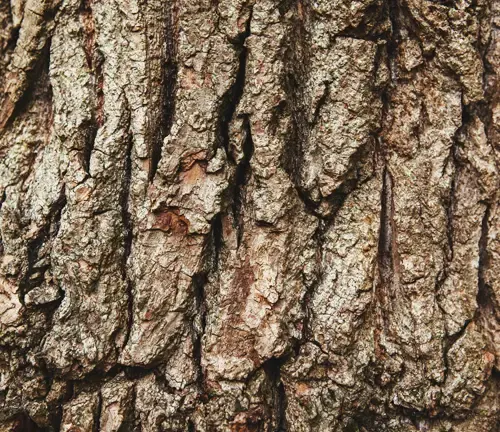
Moreover, the English Oak is not just a symbol of human culture but also a vital component of the natural world. Its leaves, acorns, and branches provide sustenance and habitat for numerous wildlife species. From the tiny acorn, which is a crucial food source for squirrels and deer, to the leafy canopy that shelters birds and insects, the tree fosters a rich and complex ecosystem.
| Characteristics | Description |
| Scientific Name | Quercus robur |
| Height | Up to 100 feet (30 meters) |
| Lifespan | Several centuries (over 1,000 years in some cases) |
| Foliage | Dark green, deeply lobed leaves, turning russet brown in autumn |
| Bark | Thick, furrowed, gray-brown bark |
| Habitat | Woodlands, forests, parks, and countryside |
| Family | Fagaceae |
| Growth Rate | Slow to moderate |
| Trunk Diameter | Up to 4 to 5 feet (1.2 to 1.5 meters) |
| Wood Density | Dense and durable |
A Brief History
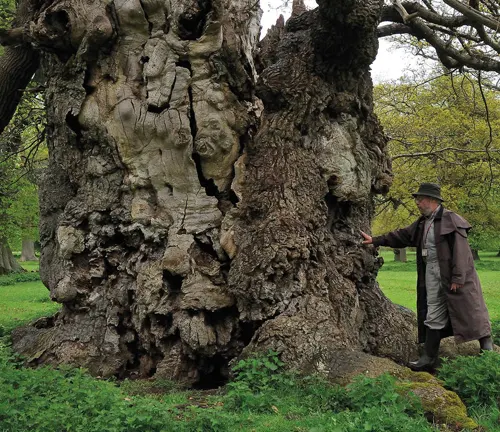
The English Oak tree, scientifically known as Quercus robur, holds a hallowed place in the heart of the British Isles. Its history is deeply entwined with the history of the region. Ancient oaks have stood witness to centuries of human events, from medieval battles to the rise and fall of empires. Oaks were even believed to provide shelter for Robin Hood in the legendary Sherwood Forest. This history is a testament to the enduring strength and cultural significance of the English Oak.
Color/Appearance
The English Oak (Quercus robur) graces the British landscape with a kaleidoscope of colors throughout the year. In spring, vibrant green leaves burst forth, creating a lively contrast against winter’s backdrop. As summer unfolds, the leaves deepen into a rich, dark green, forming a lush canopy. However, it’s in autumn that the English Oak steals the show. The foliage transforms into a riot of warm hues—bronze, russet, and fiery red—turning the tree into a symbol of the changing seasons. Even in winter, the bare branches and textured, gray-brown bark reveal the tree’s age and character. The English Oak’s dynamic colors, from the lively greens of spring to the fiery reds of autumn, make it a living masterpiece that tells the story of growth, adaptation, and beauty in the ever-changing rhythm of the seasons.

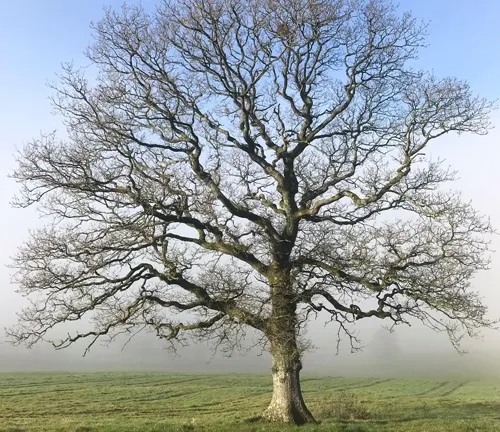
Cultivation and Care
Cultivating and caring for English Oak trees requires patience and dedication. These slow-growers demand well-drained, loamy soil and are adaptable to various soil types. Planting an oak tree is an investment in the future, as these majestic trees can live for centuries. Their care includes regular pruning to maintain shape and health, and young trees often benefit from protection against grazing animals. Proper care ensures that the tree thrives and continues to contribute to the landscape for generations to come.

Ecological Importance
The English Oak is more than just a pretty face in the British countryside. It plays a pivotal ecological role. Often referred to as a keystone species, it significantly influences the structure and diversity of its habitat. Its acorns provide sustenance for numerous wildlife species, including squirrels, deer, and various birds. The tree’s dense canopy offers shelter and nesting sites for birds, making it a hub of biodiversity. Additionally, the oak’s roots form beneficial relationships with mycorrhizal fungi, enhancing nutrient uptake and supporting neighboring plant life.


Wood Products and Applications
The wood of the English Oak is renowned for its density and durability. Historically, it was highly prized for shipbuilding, with oak ships forming the backbone of the Royal Navy of England. Today, it continues to find use in fine furniture, flooring, barrels for aging wine and spirits, and veneer for decorative applications. Its timeless beauty and strength make it a favorite among craftsmen and artisans.

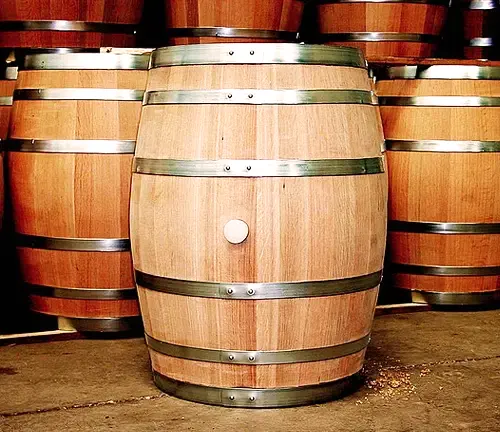
Culinary Applications
Beyond its timber, the English Oak has culinary significance. Acorns, though somewhat bitter, were once a staple food source for early humans and are still used in some traditional dishes. Acorn flour, produced by grinding dried acorns, can be used in baking and cooking.
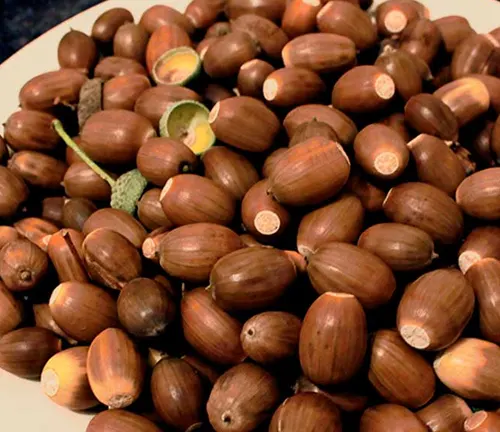

Furthermore, oak leaves and woods have been used in the smoking process for foods like meats and cheeses, imparting a distinct and savory flavor.
Benefits
The English Oak tree offers an array of benefits, from its cultural symbolism to its ecological contributions. It enhances the landscape with its majestic appearance, providing shade and visual appeal in parks and woodlands. Moreover, its role as a keystone species helps maintain biodiversity in forests and woodlands. Oak wood products are not only beautiful but also long-lasting, contributing to sustainable and environmentally friendly construction and craftsmanship. Furthermore, the tree’s potential for culinary use adds an interesting layer to its multifaceted value.
Frequently Asked Questions (FAQs)
- Do English Oaks Have Individual Personalities?
While it might sound whimsical, some enthusiasts believe that individual trees, including English Oaks, exhibit unique characteristics and personalities. Factors like growth patterns, responses to environmental conditions, and distinct features contribute to this perception. - Are English Oak Leaves Used in Traditional Medicine?
In certain traditional practices, English Oak leaves have been attributed with medicinal properties. Some historical references suggest their use in herbal remedies. While not widely recognized in modern medicine, this aspect reflects the historical and cultural significance of the tree. - Can You Identify the Age of an English Oak by Counting Rings?
Similar to many tree species, English Oaks form growth rings in their trunks. However, unlike some trees, counting these rings may not precisely determine the age. Factors such as environmental conditions and competitive growth with neighboring trees can lead to variations in ring formation. - Are There Unique Folklore or Superstitions Surrounding English Oaks?
English Oaks, with their longstanding presence in the folklore of the British Isles, have garnered various superstitions and stories. Some tales attribute protective qualities to oak trees, while others involve mystical creatures residing within their branches. Exploring these stories provides a fascinating glimpse into cultural beliefs. - How Do English Oaks Contribute to Climate Resilience?
Beyond their aesthetic and ecological roles, English Oaks play a part in climate resilience. Their adaptability to diverse soils and weather conditions, coupled with their longevity, positions them as resilient components in the face of changing climates. Understanding their role in maintaining ecosystem stability offers insights into broader environmental considerations.



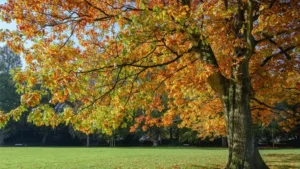
Leave your comment